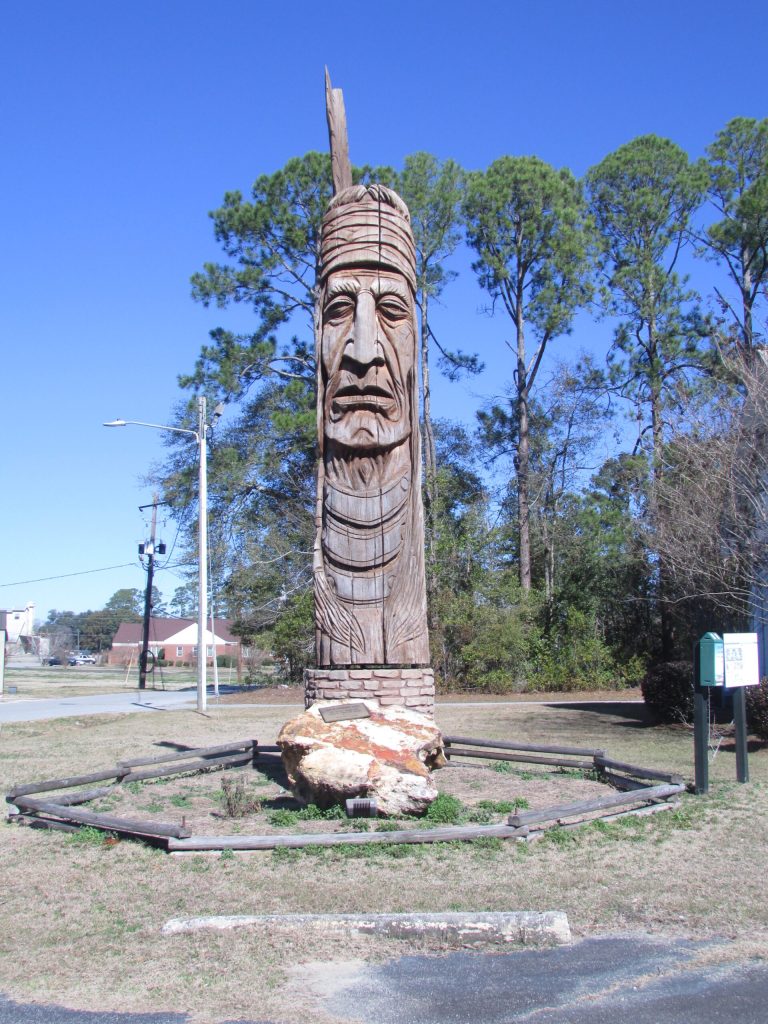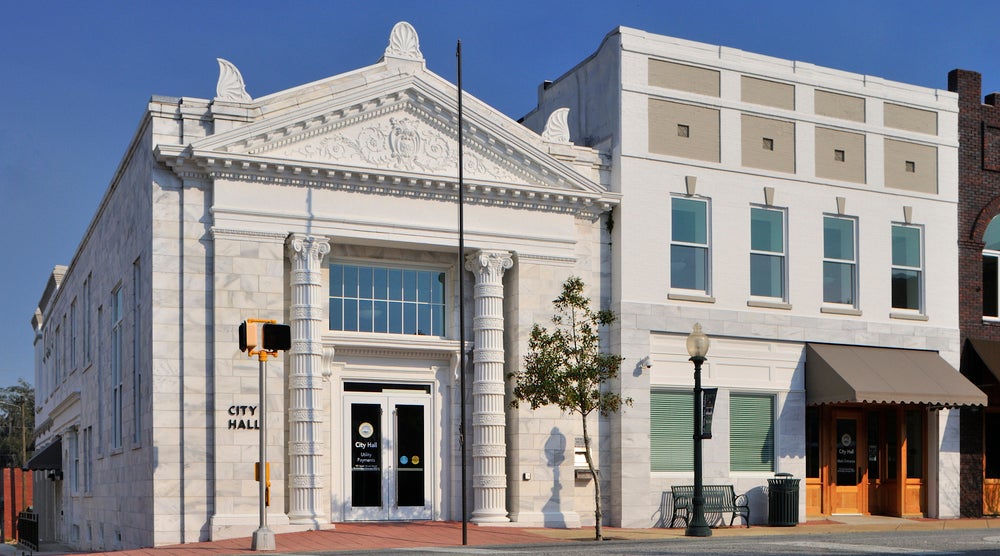Art by Mother Nature
Published 6:51 pm Sunday, March 24, 2024
|
Getting your Trinity Audio player ready...
|
It seems like no matter where you are on Spring Creek, it is not only beautiful but wild and intriguing, all at the same time. Early ancestors realized its potential and camped, hunted, and fished all along this watershed of Spring Creek. Though there are many landings along this waterway, one that is in the Miller County town of Colquitt is not only historical and scenic, it also provides a way for people to relax and enjoy the beauty along the banks.
This experience is made possible by a gorgeous boardwalk that stretches for over 1400 feet, going through the low lands and then out to the creek. It also provides fishing areas and is easily accessible for the handicapped. Where is this wonder? Right by a Recreational Vehicle Park that is right on the side of State Route 27, just after the main bridge into Colquitt.
This park and other projects, came about in the 1980s. Colquitt representatives and residence got together and planned many changes to the town and Miller County itself. This is when the plays of Swamp Gravy were mentioned as well as the many historical murals that have been painted throughout the town. This is when the development of the land by Spring Creek came about. The type of planning for Spring Creek involved preserving her with several parks and a boardwalk. They wanted this to be a fun place for families, fishermen, campers and also those interested in the sporting events of the local schools.
As you can tell, we have a lot to talk about and perhaps a sweet tea or a Coke would be tasty. Go find a sunny spot and we will find out how this park came about together.
The development of the Spring Creek Recreational Park began in the early 1980s, when Frank Bell was the part time City and County Administrator and Lola K. Godfrey was the City Clerk. At the February, 1985 meeting, the first Colquitt/Miller County Recreation Board was appointed.
Developing this park became a top priority that eventually evolved into a community project. The major supporters were the folks of Colquitt and Miller County, the Board of Education, several civic clubs and organizations, many local businesses, the Jinks Foundation Development Fund, and many other individuals that were interested in donating their time, materials and money towards this cause.
Some individuals looked into and applied for state and federal grants to get everything started. When the Mayhaw Festival of that year was over, the proceeds were donated towards the development of the park. Everyone realized the potential that was sleeping in this area and wanted it to go in the right direction.
In 1987, the Recreation Board and the Garden Club were instrumental in obtaining the assistance of the University of Georgia’s Community Development Office. They provided a landscape architect student to design a master plan for what now had grown to become thirty-six acres.
At first, the park had a humble beginning. It consisted of one softball field that did not have lighting and a nearby playground with four pieces of equipment. However, the ten-acre tract of land that it occupied was beautiful and showed a lot of potential.
The initial expansion began with the construction of the three brick restrooms with two having attached concession stands. While this was going on, the now four softball fields, three with lights for night games, were being grated out. The two tennis courts, a football/soccer field, a basketball and hand ball court and two distinct playground areas quickly sprang up. Then picnic areas were planned and they were spread throughout the park with three covered and seven uncovered picnic areas. Many are nestled under the spreading branches of huge live oak trees.
The addition of an amphitheater provided an ideal setting for entertainment and special events. Today, these parks are the center of the recreational life of the community as it provides opportunities for physical activities, festivals and places for families and friends to gather.
The last addition to the area was a designated recreational vehicle park which offers seven full-service spaces and fourteen other ones. Next came the scenic boardwalk that came about because of numerous individuals and volunteers, all working together to create a unique environment for fishing, nature study and relaxing. After several years of planning and construction, everything was completed in 2003.
The park has become a major attraction, especially when Miller County is hosting its Mayhaw Festival, the July 4th celebrations, and the Christmas lighting displays. Throughout the year there are soft ball and tennis tournaments that are also going on.
When the University of Georgia came to make the plans for the park and research the banks along Spring Creek, they found evidence that this area was used by Native Americans for making arrowheads, weapons and tools. With the natural springs and crystal-clear water, the creek was the center of an ecosystem which offered the plant and animal life necessary for the Indians’ survival. Legends tell of an Osuchi Indian tribe that lived in this area. Knowing this to be a historical place, the park was designed to enhance the Spring Creek area and not destroy it.
Exotic and beautiful, Spring Creek is vastly different from other coastal plains streams. To start with, she is much more than just a pretty face. Aptly named, Spring Creek is a beautiful ribbon of crystal-clear water that is fed largely by springs whose waters bubble up from deep within the earth, all along her route which takes her through the middle of the land that lies between the Flint and Chattahoochee Rivers. Sometimes shy, sometimes shallow, she is the most seductive of the water ways that empties into Lake Seminole.
Spring Creek has her origin in Clay County, then goes over into Calhoun County. As she flows on down, she peaks around islands and skitters over stumps while passing through Early County. When in Miller County, she twists and turns and wiggles as she gains momentum, jumping over rocks and then flirting with the cypress knees and water grasses of Decatur and Seminole Counties.
During her long journey, Spring Creek’s personality changes, especially as she approaches her destination, Lake Seminole. Here she becomes very wide and no longer resembles a playful, narrow creek. Then, with a whoosh, she joins into the Flint River. Until now, she sparkled in the sunlight the whole way along her course. However, when these two very different waterways intermingle, they create an intriguing tapestry of shallow blue and sultry brown water.
Following the spring rains and the high-water level subsides, the clear water reveals a beautiful array of underwater plant life, spring boils and a bottom that is often solid limestone. In places, this soft stone is pitted by erosion and riddled with jagged cutting edges. Certain funguses and several rare types of mollusks are plentiful and can easily be seen as a canoe passes over them. Cypress trees, along with pines and live oaks, grow freely on the land along the creek.
The upper regions of Spring Creek are too shallow for powerboat traffic but usually are perfect for paddle boats, canoes and kayaks, especially in the spring. The limestone outcroppings, that are seen in these out of the way waters, adds to the wild beauty of the partially shaded stream, while the small shoals and rocky shallows make drifting along very exciting.
This is what the town of Colquitt had to work with and protect. A valuable commodity that slips by the town and provides a perfect area for picnic spots, a small RV park as well as a very amazing boardwalk.
For me, I love the boardwalk the most, not only for its beauty but also for all of the knowledge that it has contributed to the personal history and the natural history of this area. A wonderful feature of this elevated walkway is that winds its way through the grey earth adjacent to Spring Creek. Two large branches from the main passage give way to two more. Then one of these splits into another. Two of the branches end out over at Spring Creek where there are spacious fishing decks.
The scenic boardwalk extends through the native flora and plants that grow on the banks of Spring Creek. In this wetlands forest, more than thirty-five plants thrive here, ones that you would not see unless you were walking through these woods. Since they are squishy and muddy, chances are you would never go in there. Now, you can safely walk over this area and see some most unforgettable sites.
It also goes over areas where there are some fantastic views of exotic cypress and live oak tree formations. Other trees include the maple and the white live oak. Then, while deep inside this wild woodland, there are places where trees have fallen and have left behind a very surreal landscape which contains painfully twisted remains of ancient cypresses and live oak trees.
Another one-of-a-kind site, that can be seen in Colquitt, is on the outskirt of the other side of the town from the park. This is where the unusual Whispering Giant, an eighteen-foot tall wooden Indian, stands beside the Visitors Center on State Route 27, as a special tribute to the American Indian.
Carved by Florida artist, Peter Wolf Toth, who has spent years traveling to each state in America. Following a route that once was and old Indian trail, he only carves one Whispering Giant in each state. He chose Colquitt to be the home of Georgia’s giant.
The first Colquitt statue was carved from a native red oak tree, that Peter chose from a local forest. This carving stood twenty-three feet tall and was completed in 1973. However, when Peter returned in 2002 to see the monument, he noticed that it had some deterioration caused by weathering. When he replaced the monument, he carved the eighteen foot Indian from the more durable native cedar tree.
In 1988, Peter completed his dream of having one Whispering Giant in each state. From here, he has continued his journey and has placed an additional twenty seven statues in Canada.
Peter’s workshop in Florida is very visible, as it sets along US 1, between the towns of Edgewater and Oak Hill. In front of his workshop are other carvings dedicated to the American Indian and other famous figures.
Even though he has his studio in Florida, he still travels to make repairs and more contributions to public art. He has also written two books and has been featured on numerous television shows. His works are also featured in the Smithsonian’s Art Inventory Catalogue.
Peter enjoys telling the stories and showing photographs to the visitors at his studio of when Hurricane Charley came through and tilted all the statues that were on display at this time. He ends by saying that: This shows that Mother Nature has no respect for art!






